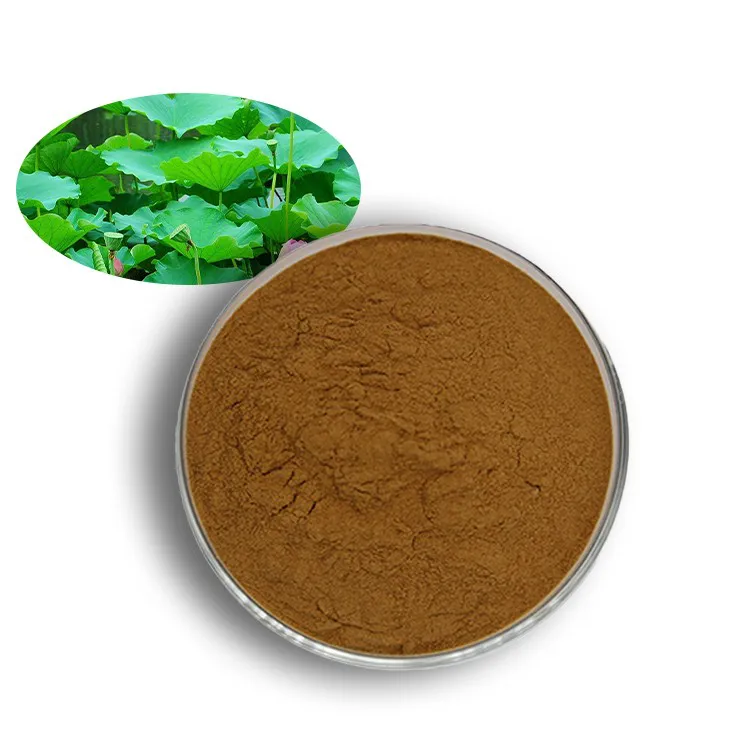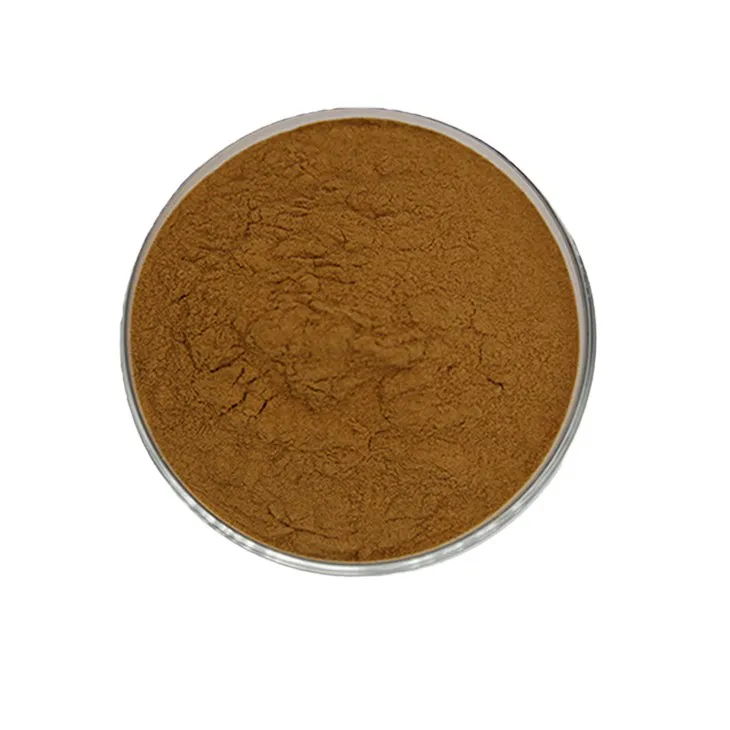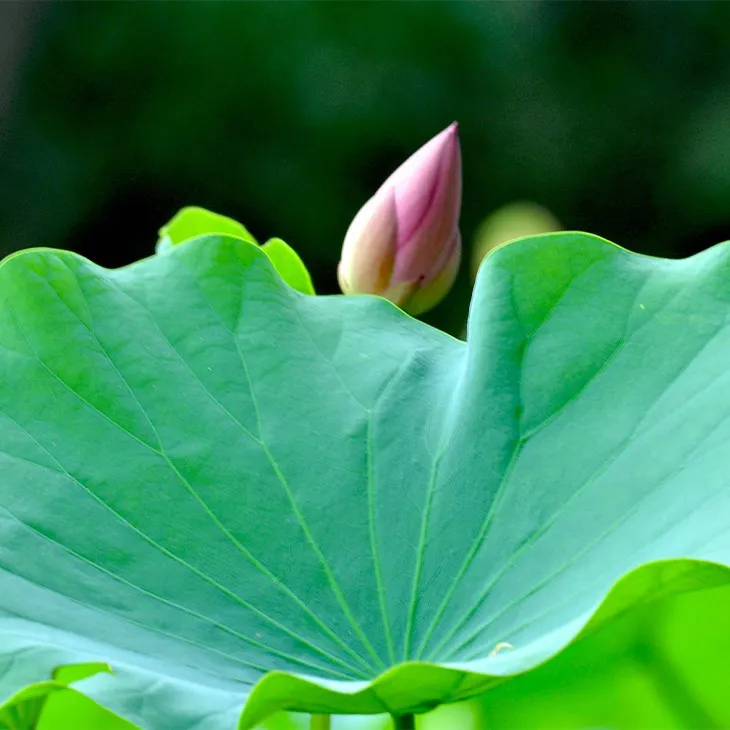- 0086-571-85302990
- sales@greenskybio.com
The best method for extracting lotus leaf extract.
2024-11-30

1. Introduction
Lotus leaves have been widely used in traditional medicine, cosmetics, and food industries due to their various beneficial properties. Extracting Lotus leaf extract effectively is of great significance. However, different extraction methods vary in extraction efficiency, cost - effectiveness, and environmental impact. This article aims to compare different extraction methods to help readers find the most suitable one for their specific requirements.

2. Common extraction methods
2.1 Solvent extraction
Principle: Solvent extraction is based on the solubility of the active components in lotus leaves in a particular solvent. Different solvents can be used to dissolve different types of compounds.
Common solvents:
- Ethanol: Ethanol is a commonly used solvent for Lotus leaf extraction. It has relatively good solubility for many active ingredients in lotus leaves, such as flavonoids. Moreover, ethanol is relatively safe and has a relatively low toxicity. It is also easy to obtain and recycle, which is beneficial for cost - effectiveness and environmental protection.
- Water: Water extraction is a simple and environmentally friendly method. However, the solubility of some hydrophobic components in water is limited. Water extraction is mainly suitable for extracting water - soluble components in lotus leaves, such as polysaccharides.
- Methanol: Methanol has strong solubility, but it is more toxic than ethanol. Extra care should be taken when using methanol for extraction to ensure safety.
Procedure:
- Prepare the lotus leaves: Clean and dry the lotus leaves to remove impurities.
- Crush the lotus leaves: Grind the lotus leaves into a fine powder to increase the contact area with the solvent.
- Add the solvent: Add the selected solvent to the crushed lotus leaves at an appropriate ratio. For example, for ethanol extraction, a common ratio may be 1: 5 - 1:10 (lotus leaf powder: ethanol, by weight).
- Extraction: Stir or shake the mixture at a certain temperature (usually room temperature or slightly elevated temperature) for a certain period of time, which can range from several hours to days. For example, for ethanol extraction, it may be stirred at 40 - 60°C for 2 - 4 hours.
- Separation: After extraction, separate the liquid extract from the solid residue using filtration or centrifugation.
- Concentration: Evaporate the solvent from the liquid extract to obtain a concentrated Lotus leaf extract.
Advantages:
- Wide range of solvent selection, which can be adjusted according to the target components.
- Relatively simple operation and equipment requirements are not extremely high.
Disadvantages:
- The use of organic solvents may pose potential safety risks and environmental pollution problems, especially for toxic solvents.
- The extraction efficiency may not be very high for some components with complex structures.
2.2 Supercritical fluid extraction (SFE)
Principle: Supercritical fluid extraction uses a supercritical fluid as the extraction agent. A supercritical fluid has properties between a gas and a liquid. Commonly used supercritical fluids, such as carbon dioxide (CO₂), can penetrate into the matrix of lotus leaves and selectively dissolve the target components under specific temperature and pressure conditions.
Procedure:
- Prepare the lotus leaves: Similar to solvent extraction, the lotus leaves need to be cleaned and dried.
- Load the lotus leaves into the extraction vessel: Place the prepared lotus leaves into the SFE extraction vessel.
- Set the extraction conditions: Adjust the temperature and pressure to make carbon dioxide reach the supercritical state. For example, the typical temperature range may be 35 - 60°C, and the pressure may be 10 - 30 MPa.
- Extraction: Allow the supercritical carbon dioxide to flow through the lotus leaves in the extraction vessel for a certain period of time, usually several tens of minutes to a few hours.
- Separation: After extraction, the supercritical fluid is depressurized, and the dissolved components are separated from the carbon dioxide. The carbon dioxide can be recycled for reuse.
Advantages:
- Environmentally friendly, as carbon dioxide is a non - toxic, non - flammable gas, and can be recycled, reducing environmental pollution.
- High extraction efficiency for some volatile and lipophilic components in lotus leaves.
- Can selectively extract target components, which is beneficial for obtaining high - purity extracts.
Disadvantages:
- The equipment for supercritical fluid extraction is relatively expensive, which leads to high initial investment costs.
- The operation process requires strict control of temperature and pressure, which is relatively complex.
2.3 Microwave - assisted extraction (MAE)
Principle: Microwave - assisted extraction utilizes microwave energy to heat the lotus leaf - solvent mixture. Microwave radiation can cause the polar molecules in the mixture to vibrate rapidly, generating heat. This heat can accelerate the dissolution of the active components in the lotus leaves into the solvent.
Procedure:
- Prepare the lotus leaves and solvent: Clean and dry the lotus leaves, and select an appropriate solvent, such as ethanol or water.
- Place the mixture in a microwave - transparent container: Put the lotus leaf - solvent mixture into a container that can be penetrated by microwaves, such as a quartz or Teflon container.
- Set the microwave parameters: Adjust the microwave power and irradiation time. For example, the microwave power can be set to 300 - 800 W, and the irradiation time can be 1 - 10 minutes.
- Extraction: Subject the mixture to microwave irradiation. During the irradiation process, the mixture will be heated, and the active components will be dissolved into the solvent.
- Separation: After microwave - assisted extraction, separate the liquid extract from the solid residue by filtration or centrifugation.
Advantages:
- Fast extraction speed, which can significantly reduce the extraction time compared to traditional solvent extraction methods.
- Relatively high extraction efficiency for some components.
- The energy consumption is relatively low compared to some other extraction methods.
Disadvantages:
- The extraction may not be uniform, especially for large - scale extraction, which may lead to inconsistent quality of the extract.
- There may be potential microwave leakage risks during the operation, which requires proper safety precautions.
2.4 Ultrasonic - assisted extraction (UAE)
Principle: Ultrasonic - assisted extraction uses ultrasonic waves to generate cavitation bubbles in the lotus leaf - solvent mixture. When these cavitation bubbles collapse, they produce high - pressure and high - temperature micro - environments, which can break the cell walls of lotus leaves and promote the release of active components into the solvent.
Procedure:
- Prepare the lotus leaves and solvent: Similar to other extraction methods, clean and dry the lotus leaves and select an appropriate solvent.
- Place the mixture in an ultrasonic bath or use an ultrasonic probe: Put the lotus leaf - solvent mixture into an ultrasonic bath or directly use an ultrasonic probe to irradiate the mixture.
- Set the ultrasonic parameters: Adjust the ultrasonic frequency, power, and irradiation time. For example, the ultrasonic frequency can be set to 20 - 50 kHz, the power can be 100 - 500 W, and the irradiation time can be 15 - 60 minutes.
- Extraction: Subject the mixture to ultrasonic irradiation. During the irradiation process, the active components will be released into the solvent.
- Separation: After ultrasonic - assisted extraction, separate the liquid extract from the solid residue by filtration or centrifugation.
Advantages:
- Simple operation and relatively low - cost equipment requirements.
- Can effectively break the cell walls of lotus leaves, improving the extraction efficiency.
- Can be combined with other extraction methods to further improve the extraction effect.
Disadvantages:
- The extraction efficiency may be limited for some components with very complex structures.
- There may be potential noise pollution during the ultrasonic operation.

3. Comparison of different extraction methods
3.1 Extraction efficiency
- Supercritical fluid extraction (SFE) generally has high extraction efficiency for volatile and lipophilic components in lotus leaves. It can selectively extract target components with high purity.
- Microwave - assisted extraction (MAE) and ultrasonic - assisted extraction (UAE) also show relatively high extraction efficiency for some components, especially when combined with appropriate solvents. However, their extraction efficiency may not be as high as SFE for some complex components.
- Solvent extraction has relatively lower extraction efficiency for some components compared to the above - mentioned methods, especially for those components with complex structures and low solubility in the selected solvent.
3.2 Cost - effectiveness
- Solvent extraction is relatively cost - effective in terms of equipment and operation. The solvents are relatively inexpensive, and the equipment requirements are not very high. However, the cost of solvent recovery and disposal should also be considered, especially for organic solvents.
- Ultrasonic - assisted extraction (UAE) has relatively low - cost equipment requirements, and the operation cost is also relatively low. It is a cost - effective method.
- Microwave - assisted extraction (MAE) has moderate equipment and operation costs. Although it can save extraction time, the equipment price is relatively higher than UAE.
- Supercritical fluid extraction (SFE) has high initial investment costs due to the expensive equipment. However, considering the recyclability of carbon dioxide and the high - quality extracts obtained, it may be cost - effective in the long run for some high - value - added applications.
3.3 Environmental impact
- Supercritical fluid extraction (SFE) is the most environmentally friendly method as it uses carbon dioxide as the extraction agent, which is non - toxic and recyclable.
- Water - based solvent extraction is also environmentally friendly, but its extraction range is relatively limited for some hydrophobic components.
- For organic solvent - based solvent extraction, such as ethanol and methanol extraction, there may be potential environmental pollution problems if the solvents are not properly recovered and disposed of.
- Microwave - assisted extraction (MAE) and ultrasonic - assisted extraction (UAE) have relatively small environmental impacts as long as the energy consumption is controlled within a reasonable range.

4. Conclusion
There is no one - size - fits - all "best" method for extracting lotus leaf extract. The choice of extraction method depends on various factors such as the target components, cost - effectiveness requirements, and environmental considerations. If high - purity, volatile, and lipophilic components are to be extracted, and cost is not the primary concern, supercritical fluid extraction may be a good choice. For small - scale extraction with relatively simple equipment requirements and cost - effectiveness, ultrasonic - assisted extraction or solvent extraction (especially water - based) may be more suitable. Microwave - assisted extraction can be considered when fast extraction speed is required. In any case, proper safety precautions and environmental protection measures should be taken during the extraction process to ensure the quality and safety of the lotus leaf extract.

FAQ:
Question 1: What are the common extraction methods for lotus leaf extract?
Common extraction methods for lotus leaf extract include solvent extraction (such as using ethanol or methanol as solvents), ultrasonic - assisted extraction, and microwave - assisted extraction. Solvent extraction is a traditional method. Ultrasonic - assisted extraction uses ultrasonic waves to enhance the mass transfer process, which can improve extraction efficiency. Microwave - assisted extraction utilizes microwave energy to heat the sample quickly, also increasing the extraction rate.
Question 2: Which extraction method has the highest extraction efficiency?
Microwave - assisted extraction often has relatively high extraction efficiency. The microwave energy can penetrate the lotus leaf tissue quickly, causing the active components inside to be released more rapidly compared to traditional solvent extraction. However, the extraction efficiency also depends on factors such as the type of solvent used, extraction time, and temperature. Ultrasonic - assisted extraction can also achieve a high extraction rate in a relatively short time by disrupting the cell walls of the lotus leaf effectively.
Question 3: How does cost - effectiveness play a role in choosing the extraction method?
Cost - effectiveness is an important consideration. Solvent extraction is generally relatively simple in terms of equipment requirements, but the cost of solvents and the subsequent solvent recovery process need to be considered. Ultrasonic - assisted extraction equipment may have a certain cost, but it can reduce extraction time and solvent consumption in some cases, thus being cost - effective in the long run. Microwave - assisted extraction equipment is usually more expensive, but if high - efficiency extraction can be achieved in a short time, it can also be cost - effective especially for large - scale production.
Question 4: What are the environmental impacts of different extraction methods?
Solvent extraction may have environmental impacts due to the use of solvents. If the solvents are not properly managed, they may cause pollution. Ultrasonic - assisted extraction and microwave - assisted extraction, when properly operated, can reduce solvent usage to some extent, thereby having less environmental impact in terms of solvent waste. However, the energy consumption of microwave - assisted extraction equipment needs to be considered, as high energy consumption may also have an indirect environmental impact.
Question 5: Are there any special requirements for the raw materials in different extraction methods?
For solvent extraction, the raw materials should be in a suitable form, usually dried and ground to a certain particle size to ensure good contact with the solvent. In ultrasonic - assisted extraction, the physical properties of the raw materials, such as porosity, may affect the efficiency of ultrasonic wave penetration. For microwave - assisted extraction, the water content in the raw materials may influence the microwave absorption and heating efficiency, so appropriate drying or pretreatment may be required.
Related literature
- Optimization of Lotus Leaf Extract Extraction by Ultrasonic - Assisted Method"
- "Microwave - Assisted Extraction of Bioactive Compounds from Lotus Leaves"
- "Solvent Extraction of Lotus Leaf Extract: A Traditional but Effective Approach"
- ▶ Hesperidin
- ▶ citrus bioflavonoids
- ▶ plant extract
- ▶ lycopene
- ▶ Diosmin
- ▶ Grape seed extract
- ▶ Sea buckthorn Juice Powder
- ▶ Beetroot powder
- ▶ Hops Extract
- ▶ Artichoke Extract
- ▶ Reishi mushroom extract
- ▶ Astaxanthin
- ▶ Green Tea Extract
- ▶ Curcumin Extract
- ▶ Horse Chestnut Extract
- ▶ Other Problems
- ▶ Boswellia Serrata Extract
- ▶ Resveratrol Extract
- ▶ Marigold Extract
- ▶ Grape Leaf Extract
- ▶ blog3
- ▶ blog4
- ▶ blog5
-
The best lemon juice powder in nature.
2024-11-30
-
Organic Vitamin K2 Powder Suppliers
2024-11-30
-
Bulk purchase of L - tyrosine.
2024-11-30
-
Vitamin K2 Manufacturers
2024-11-30
-
100% Pure Natural Rutin.
2024-11-30
-
Chinese Citrus Bioflavonoid Suppliers.
2024-11-30
-
Sugarcane Extract
2024-11-30
-
Withania Somnifera Extract
2024-11-30
-
Centella Asiatica Extract
2024-11-30
-
Lavender Extract
2024-11-30
-
Lemon Extract
2024-11-30
-
Ivy Extract
2024-11-30
-
Hawthorn Extract
2024-11-30
-
Kidney Bean Extract
2024-11-30
-
Oyster Mushroom Extract Powder
2024-11-30
-
Pine bark Extract Powder
2024-11-30





















